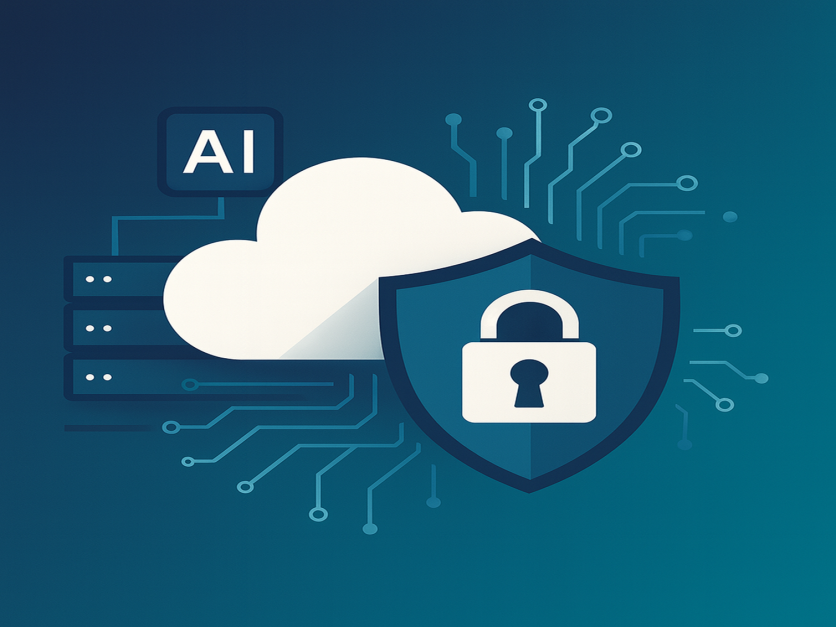
In today's digital world, where security breaches can expose millions of records in seconds, and quantum computing is quickly moving from theory to reality, traditional cryptographic systems are under serious threat. The go-to encryption methods of the 20th century, like RSA and ECC, are aging as well. They simply weren't built to handle the one-two punch of advanced cyberattacks and quantum-powered decryption.
Although post-quantum cryptography (PQC) has a potential solution, the transition is complicated, requiring enormous cryptography infrastructures, established standards, and compliance ecosystems across the world. Here, artificial intelligence (AI) is promising to be a strange but powerful friend.
Automating cryptographic discovery, vulnerability analysis, and infrastructure optimization, AI could be leveraged to audit and modernize cryptographic systems at scale, reducing the time it takes to become quantum-ready, beyond what is possible with classical methods alone.
As a Senior Technical Leader at Oracle, Mr. Pavan Nutalapati has been at the helm of mission-critical infrastructure projects impacting millions of users, securing financial transactions, and architecting disaster-resilient, zero-trust cloud environments for some of the world's most regulated enterprises. In this article, he shares his insights on how AI can accelerate the global shift toward post-quantum cryptography, the challenges enterprises face in this transition, and the strategic steps organizations must take today to secure their digital future against tomorrow's quantum threats.
The Quantum Threat: Real, Near, and Strategic
According to Mr. Pavan, a cryptographic transformation veteran in the industry, "waiting until quantum computers are fully implemented is not the solution. Its danger is not what can be done by quantum computers today, but what they will be capable of, with today-collected data, tomorrow."
This idea amplifies the harvest-now, decrypt-later threat. As Mr. Pavan emphasizes, "the opponents are already hoarding sensitive, long-life data, eg, medical records, legal documents, military communication, with the hope of cracking them in case the quantum machine is powerful enough to break RSA and ECC."
In sectors like government, medicine, and finance, where data may retain value even decades from now, the threat becomes even more urgent. The mindset must shift from reactive to proactive cryptographic modernization. As Mr. Pavan puts it, "post-quantum cryptography is no longer a mere technical upgrade; it's a business survival strategy."
The Reason AI Is a Game Changer in the PQC Migration
Cryptography is not so easily moving to post-quantum cryptography by replacing algorithms. It means locating the technology of cryptography, evaluating risks, and making certain that devised solutions fit well in large, heterogeneous systems. And that is where AI comes into play.
Automated Cryptographic Design
The majority of organizations do not have visibility into where and how cryptography is implemented. These AI-powered scanners are able to conduct in-depth persistent reconnaissance at the endpoint, servers, and clouds. They are able to discover cryptographic libraries, certificate chains, key lengths, and exploits with speed and sensitivity.
Machine Learning Based Risk Prioritization
The use of AI models can then enable the correlation between the data concerning the use of cryptography and the contextual risk factors, i.e., sensitivity, geographic location, and impact on compliance, to prioritise what should be upgraded. In Mr. Pavan's view, "AI lets us make smarter, risk-informed decisions during the transition, rather than reacting blindly."
Hybrid System Simulation and Modeling
Artificial intelligence can simulate hybrid systems, where classical and post-quantum algorithms coexist. Through AI-powered digital twins, organizations can anticipate how hybrid certificates might affect system latency, interoperability, and compliance before making any real-world changes. Mr. Pavan believes this kind of modeling is essential for smooth migration and says, "It helps us know what to expect before flipping the switch."
Artificially Intelligent Penetration Testing
New AI technologies have the ability to imitate classical and quantum-type attacks to see how existing cryptographic schemes can withstand them. According to Mr. Pavan, "these quantum red teams give security leaders a better sense of their most vulnerable points in an organization and how to strengthen them."
Hybrid Cryptography: A Pragmatic Quantum Link
Though the end goal is a fully quantum-resistant infrastructure, the path taken has to be well taken care of. Hybrid cryptography plays a decisive intermediate role, where organizations can make that transition to PQC without shattering the systems that are already on the ground.
So, according to Mr. Pavan:
"Hybrid certificates are backward compatible and forward resilient. They incorporate both classical and quantum-safe signatures, so that systems today are still functioning and those tomorrow are being prepared."
To give an example, a TLS certificate may indicate an RSA signature when the environment is legacy and a CRYSTALS-Dilithium signature when PQC support is available. This bilingual signage enables the new system to co-exist with the old one throughout the migration.
Roadmap to Post-Quantum Readiness
As the move to PQC is likely to be quite demanding, organizations are recommended to follow a well-organized, AI-upgraded migration strategy:
Audit and Inventory
When employing AI technology to scan and inventory all cryptographic assets in use today, including certificates, keys, libraries, and protocols, throughout the enterprise, Mr. Pavan stresses the importance of prioritizing systems based on the sensitivity and lifespan of stored data, especially in industries like healthcare and government.
Pilot Hybrid Certificates
Put hybrid certificates in non-production environments. "Through AI, there will be simulated performance, detection of compatibility concerns, and advanced analytics to be used to make decisions during the rollout stages," says Mr. Pavan.
Trigger-Based Transitioning
It should have well-defined catalysts to transition between hybrid and full PQC deployment (regulatory demands, customer demands, etc., or finalization of NIST standards).
Renewal of Policy and Documentation
Make sure that security policies, HSM configurations, incident response plans, and compliance audits all take account of the new hybrid state. The use of AI-based governance tools would keep the standards consistent as the standards evolve.
"The combination of visual and ordered representation with AI makes the theoretical migration to PQC a measurable and actionable plan," he adds.
Still Existent: Technical and Organizational Challenges
Nevertheless, there are actual barriers to transition to PQC, notwithstanding what AI provides. And Mr. Pavan identifies them as follows:
- Larger certificate sizes: PQC algorithms have a tendency to create bigger keys and signatures.
- Long TLS handoffs: This impacts latency-sensitive applications.
- Legacy incompatibility: The systems composed of strict size limitations are bound to malfunction.
"These stress points," Mr. Pavan explains, "can be simulated by AI beforehand, advocating architectural alterations or compensations where necessary."
He further adds that the organizational issues can be even more complicated:
- The non-technical stakeholders have no knowledge of cryptography.
- The budgetary inertia is caused by something that is not directly visible to the currency risks of crypto.
- Decision-making within the siloed security, infrastructure, and compliance teams.
The gaps can be filled with AI-powered collaboration tools, which combine dashboards, risk reports, and regulatory guidance in order to make the cryptography modernization a boardroom issue, not just an engineering one.
Governance, Standards, and the Role of NIST
In 2022, when four PQC algorithms were announced by the NIST, it became a landmark moment in the history of cryptography. The new standard, spearheaded by those platforms, CRYSTALS-Kyber and CRYSTALS-Dilithium, is on its way; however, the real-world adoption is not present yet.
As Mr. Pavan observes, "standardization is a must, but adoption has nothing to do with agility." Organizations need to develop cryptographic agility cryptographic agility the capability to substitute or include cryptographic algorithms with little discomfort.
AI can help in this area by dynamically orchestrating cryptographic settings, providing intelligent rollback choices available, and ensuring real-time monitoring of compliance around the world and between jurisdictions.
Real-Use Case: AI and PQC Disaster Recovery
Hybrid certificates are not only forward-looking: they make operations more resilient nowadays.
Mr Pavan presents an example, supposing there could be an enterprise that is spread worldwide, it many data centers. In case one of your data centers is taken offline, you should be able to trust encrypted communications.
Mr. Pavan says:
"A hybrid certificate will guarantee that the trust can continue-both in the current cryptographic environment as well as the future quantum threats."
AI takes it further because it predicts failure points, eliminates human intervention in certificate rotation, and provides a seamless cryptographic trust through failover environments.
Strategic Advice to Leaders: It Is Time to Act Now
To organizations looking to keep quantum threats out of the equation, and even maintain operations steady, Mr. Pavan suggests the following AI-empowered measures:
- AI Discovery tools with Cryptographic Inventory: Find all cryptography usage in your environment, including APIs, databases, VPNs, TLS, and cryptographic backups, with AI agents.
- Take a Sensitivity-Longevity Priority: Apply machine learning models to estimate the high-risk datasets in the context of quantum decryption and begin working on them.
- Hybrid Solutions Testing at Scale: Perform machine learning based performance/compatibility tests of hybrid certificates in sandboxed setups.
- Advanced Cryptographic Agility: Embrace platforms and libraries that offer dynamic algorithms and integration--ready whenever the standardization body (NIST or industry) gets their act together next.
- AI Simulated Learning and Training: To achieve internal awareness, train in training scenarios and threat simulations with AI, and stakeholder workshops, using generative AI.
Conclusion: Intelligence Is a Door to Future-Proofing
It is not only that AI and PQC are compatible, but also that they are complementary. Artificial intelligence enhances the digital systems and architectures shift, where culture and models are discovered, architected, tested, and optimized on every level of the computer infrastructure. Combining the structural advantages of hybrid cryptography and the advent of standards by NIST, the synergy forms an irresistible journey to quantum security.
Organizations that adopt both AI and PQC are not only preparing themselves for the future, remarks Mr. Pavan. They are designing it.
According to Mr. Pavan Nutalapati:
"The opportunity is open now, make observations on it. However, it will not always be open. Tomorrow enemies are training today. Now defenders should also do so, with the kind of intelligence and agility that only AI can bring to the problem."
Automating the cryptographic lifecycle with artificial intelligence will not only make enterprises more modern but also future-proof.
"The views and opinions expressed in this article are solely my own and do not necessarily reflect those of any affiliated organizations or entities."
ⓒ 2025 TECHTIMES.com All rights reserved. Do not reproduce without permission.






